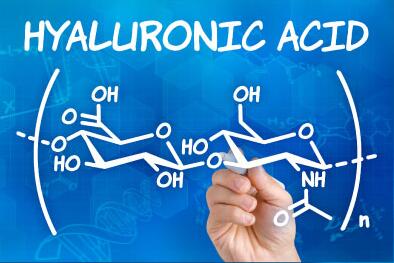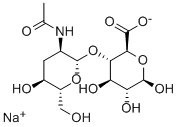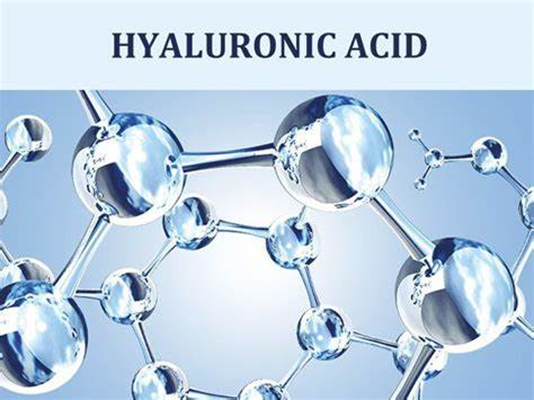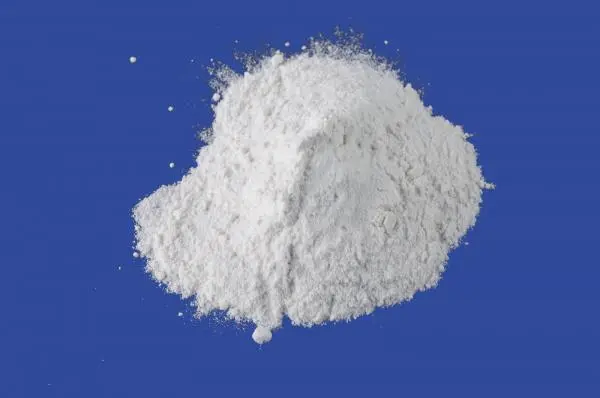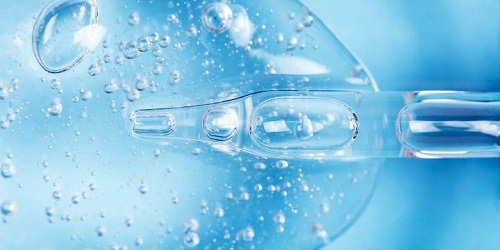The Importance of Hyaluronic Acid
What Is Hyaluronic Acid?
If there’s one thing to make anyone with a scientific background cringe it’s when an advertiser starts pushing ‘the science stuff’. Probably the worst offenders are cosmetic manufacturers, and you don’t have to take in many of their adverts before getting the impression that hyaluronic acid is a wonder substance, a compound well worthy of study.Hyaluronic acid, also known as hyaluronan, is one of a group of naturally occurring complex organic compounds called glycosaminoglycans, that form long polysaccharide chains with a repeating formula of C14H21NO11. It was first found in the vitreous humour – the clear gel that fills the eye – which is where its name, combining ‘hyalos’, the Greek for ‘vitreous’, with ‘uronic acid’, originates. But hyaluronic acid also occurs widely in connective tissues, forming a major component of the matrix that supports cells in an organism. Its properties were first investigated by the German biochemist Karl Meyer at the University of California, Berkeley in the 1930s.
Hyaluronic acid or hyaluronan, is actually a carbohydrate molecule that naturally occurs in our bodies. To answer the question you are asking yourself, yes, it’s already in our skin! HA provides lubrication to the connective tissues of our joints and skin and is an important part of our skin’s overall health. Where can you find HA? Well, it presents itself in many areas of your body including your eyes, internal fluids, and connective tissue, but most of it is in your skin! No worries though, the HA that is sold on the beauty market is replicated in a medical lab and not taken from people.
Hyaluronic Acid has been a hot topic for a while now and it shows no signs of slowing down, which it shouldn’t because it’s honestly a hydration hero for ALL skin types. But even if you love reaching for your moisturizer that boasts the presence of Hyaluronic Acid to bring your skin back to life...do you actually know what it is? (It’s okay if you don’t. You’re not alone!) We’re here to breakdown the beauty of this powerhouse ingredient. Hyaluronic Acid is a naturally occurring molecule in skin and connective tissue that attracts and holds moisture. This means everyone already has HA working wonders on their skin. As we age, the levels of HA diminishes and with it so does skin’s ability to retain moisture. Babies are well-stocked on HA, which is part of the reason we all strive for skin ‘soft as a baby’s bottom’.
One of the best ways to increase hyaluronic acid production? Ingest it. Leafy greens like spinach and kale, starchy root vegetables, and bone broths are good sources of HA. (There are also some freaky sources, like rooster comb and fish eyeballs, if you want to really go above and beyond.)
Why Is Everyone Obsessed With It?

If you’re looking for hydrated, smooth, soft and overall plumped-up skin, HA is your secret weapon. HA can retain almost 1000 times its weight in water (Hello, agua!) but also possesses self-regulating qualities so that it doesn’t drown your skin in moisture.
HA is a power player not only for its hydrating benefits but also for anti-aging purposes. We’ve never been one to turn up our nose at anti-aging properties. In addition to replenishing moisture to your skin, it instantly improves signs of fine lines and wrinkles by revitalizing the outer layers on your skin. And don’t be fooled by the word acid in its name. Hyaluronic Acid is a calming, hydrating presence for all skin types (even the Sensitive Skin Sally’s of the world!).
Everyone needs a little HA in their life, which is why we’ve included a list of our favorite products containing HA. Specifically, these products feature Sodium Hyaluronate, which is the water-soluble salt form of HA because it’s a more stable version of HA. Sodium Hyaluronate also has a smaller molecular size allowing it to penetrate the skin more deeply.
What industries is it applied to?
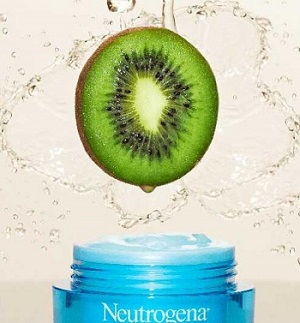
Hyaluronic Acid is also a significant component of skin, where it has a role in tissue repair, hence the enthusiasm of the cosmetic manufacturers. But the first use of the substance was at a deeper medical level. It has been employed since the 1970s after cataract operations to encourage tissue healing and has also been used as an injection to treat ankle, knee and shoulder osteoarthritis pain, though there is some debate about its actual benefits in this case. It is more widely used to treat joint disorders in horses. And it has also been employed to produce biological scaffolds to help with wound healing, particularly when diabetes hinders the healing of chronic wounds. The opportunities for using the compound in regenerative medicine are being widely studied, as it can help shape structures as well as encourage healing.
Hyaluronic acid is used for different types of treatments, such as those for the joints, skin, and eyes.Hyaluronic acid injections are used for joint treatments. These injections may be intra-articular (within the joint capsule) or periarticular (around the joint capsule). A few joint conditions treated with hyaluronic acid include:
Osteoarthritis. Hyaluronic acid injections may reduce or relieve inflammation caused by wearing of the cartilage and bone in osteoarthritic joints. The injected gel helps to restore lubrication and also induces the growth of new cartilage and bone tissue in these joints. Osteoarthritis of the knee, shoulder, ankle, hip, and thumb joints may be treated with hyaluronic acid injections.
Frozen shoulder. Hyaluronic acid injections may help relieve stiffness in a frozen shoulder. Research suggests the decreased stiffness may be due to the effects of hyaluronic acid in decreasing inflammation and swelling in the synovial membrane.
Rheumatoid arthritis. A recent small study revealed that hyaluronic acid injections may help control inflammation and synovitis in the foot and ankle joints caused by rheumatoid arthritis.
Ankle sprain. Hyaluronic acid injection in a sprained ankle joint may help decrease inflammation and reduce pain.
Tennis elbow. Chronic degeneration of the lateral epicondyle tendon causing tennis elbow may be treated with hyaluronic acid injection in the elbow joint.
Hyaluronic acid is most commonly used in the treatment of knee osteoarthritis. Some doctors may also recommend the use of hyaluronic acid oral supplements with or without injections while treating osteoarthritis. Research suggests taking oral supplements of hyaluronic acid may help treat some osteoarthritic patients with mild knee pain.
How can we produce Hyaluronic Acid?
Hyaluronic acid can be commercially manufactured using bacterial fermentation or extracted from certain animal tissues, typically rooster combs.
Bacterial fermentation: Fermenting the group C streptococci bacteria is the most common method of producing hyaluronic acid on a commercial scale. During fermentation, the bacteria undergo specific treatments to increase their production of hyaluronic acid. The gel is then extracted from the fermentation broth of these bacteria.
Rooster combs: The most commonly used animal tissue for extraction of hyaluronic is the comb (fleshy crest on the top of the head) of an adult male turkey or chicken. The hyaluronic acid from these tissues needs extensive purification in order to be suitable for human use. The comb tissue extract undergoes various levels of treatments including filtration, drying, and conditioning in order to obtain hyaluronic acid.
Hyaluronic acid is more commonly extracted from bacterial fermentation than rooster combs. The bacterial extract produces higher yield, better quality, and has a lower risk of contamination.
How Often Should You Use It?
As part of your skincare routine, hyaluronic acid-containing products can be used daily, ideally after cleansing. Additionally, HA can be a wonderful post-treatment application for those who have microneedling procedures done. For best results, choose a safe and gentle hydrating gel in the 48 hours after the procedure.Remember, if you're looking to update your skincare regimen, it's important to slowly introduce these types of products and observe the difference they make. Once you've fully integrated it into your daily routine, you're likely to start noticing all the benefits hyaluronic acid has to offer — and telling your friends about its advantages.
Possible side effects?
Hyaluronic acid also has a natural dark side. A number of compounds involved with hyaluronic acid, notably the hyaluranon synthases, enzymes that build the long chain of the compound, are major contributors to cancer metastasis, the process by which cancer spreads from one organ to another. The compound can also degrade under the action of ultraviolet light and can produce inflammation if it begins to break down after application to the skin.
References
https://www.chemistryworld.com/podcasts/hyaluronic-acid/8535.article
https://www.ernolaszlo.com/blog/post/hyaluronic-acid
https://www.arthritis-health.com/treatment/injections/what-hyaluronic-acid
https://www.refinery29.com/en-us/hyaluronic-acid-for-skin
https://thebreastcancercharities.org/hyaluronic-acid-what-you-need-to-know/
https://www.certifiednutra.com/hyaluronic.php
You may like
Related articles And Qustion
See also
Lastest Price from Hyaluronic acid manufacturers
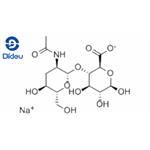
US $0.00-0.00/KG2025-11-25
- CAS:
- 9004-61-9
- Min. Order:
- 1KG
- Purity:
- 98
- Supply Ability:
- 10000KGS
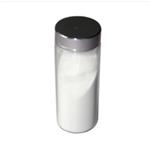
US $50.00-39.00/KG2025-11-03
- CAS:
- 9004-61-9
- Min. Order:
- 1KG
- Purity:
- 99%
- Supply Ability:
- 100tons
